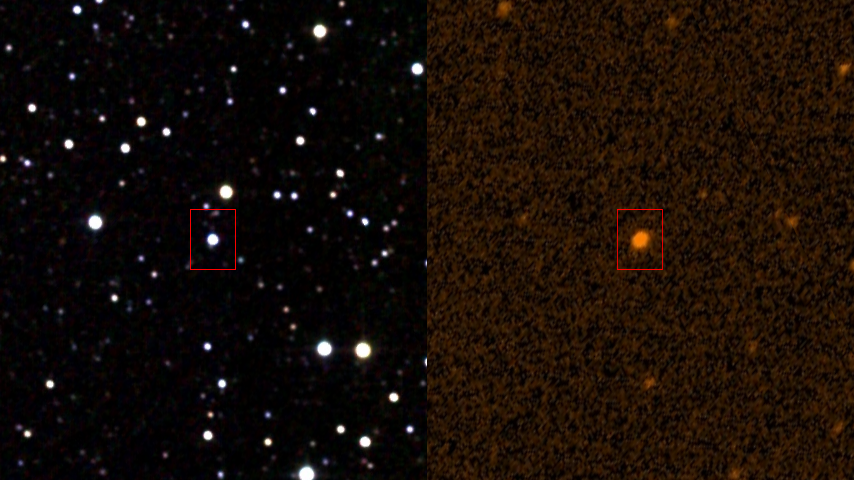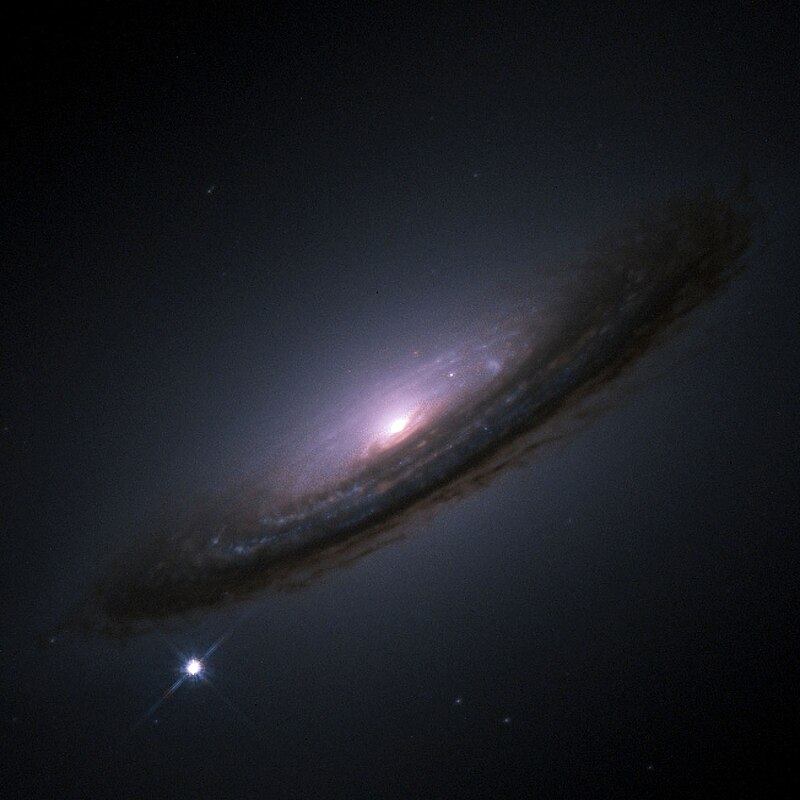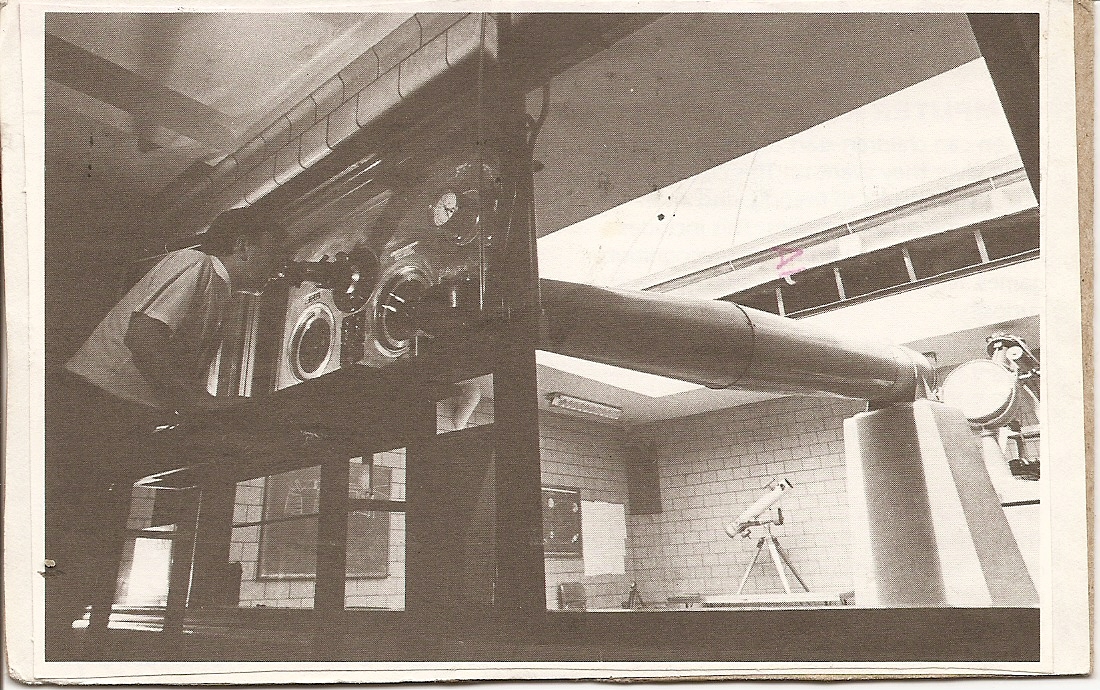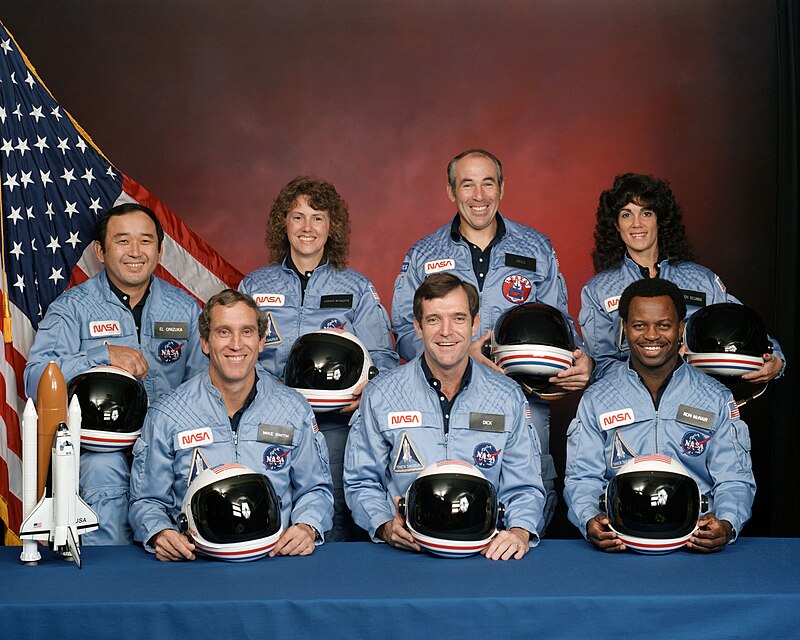
NASA Space Shuttle Challenger (Mission STS-51-L) crew ---
Front Row: Michael J. Smith, Dick Scobee, Ronald McNair;
Back Row: Ellison Onizuka, Christa McAuliffe, Gregory Jarvis, Judith Resnik.
(Image Sources: NASA, Wikipedia.org , "Challenger flight 51-l crew" by NASA - NASA Human Space Flight Gallery (image link). Licensed under Public Domain via Commons - https://commons.wikimedia.org/wiki/File:Challenger_flight_51-l_crew.jpg#/media/File:Challenger_flight_51-l_crew.jpg )
By Glenn A. Walsh
Reporting for SpaceWatchtower
Thirty years ago this morning (1986
January 28), the NASA Space Shuttle Challenger (Mission STS-51-L)
broke apart 73 seconds after the 11:38 a.m. Eastern Standard Time
(EST) / 16:38 Coordinated Universal Time (UTC) launch from Cape
Canaveral, Florida. Seven astronauts perished following the
spacecraft's break-up and fall into the ocean.
It was the second of three major
tragedies where NASA astronauts died during, or in preparation for, a
space mission. In a cruel irony, all three tragedies occurred within
one week of the calendar ---
1986 January 28: Break-up of the Space Shuttle Challenger (Mission STS-51-L), shortly after launch, which included seven astronauts: Francis (Dick) Scobee, Michael Smith, Judy Resnik, Ellison Onizuka, Ronald McNair, Gregory Jarvis, and Christa McAuliffe (who was to become the first Teacher-in-Space).
2003 February 1: Explosion of the Space Shuttle Columbia (Mission STS-107), during re-entry, which included seven astronauts: Rick Husband, William McCool, Michael Anderson, David Brown, Dr. Kalpana Chawla, Laurel Clark, and Ilan Ramon.
Originally, the Mission
STS-51-L had been scheduled to launch on 1986 January 22 at 2:42 p.m.
EST / 19:42 UTC. However, a series of delays, due to a conflict with
the launch of a previous mission (Mission STS-61-C on Space Shuttle
Columbia, which had launched just 10 days earlier), poor weather
conditions, and technical problems with the spacecraft's exterior
access hatch, led to the launch on the morning of 1986 January 28.
Shortly after the January 28 launch of
the Space Shuttle Challenger, an O-ring seal in the right solid
rocket booster failed, which led to the escape of burning gas from
within the rocket motor. This damaged the solid rocket booster and
caused a structural failure of the large external fuel tank. .
Then, aerodynamic forces broke-up the
spacecraft, which fell into the Atlantic Ocean with the crew members.
A crew escape system had not been included with the design of the
Space Shuttle.
U.S. President Ronald Reagan addressed
the nation on radio and television that evening, regarding the
disaster. He appointed a blue-ribbon commission, the Rogers
Commission, to investigate the accident. NASA did not return to
flying the Space Shuttle in space for 32 months.
When the Rogers Commission Report was
released, on 1986 June 9, the findings included:
- The failure of the O-rings in sealing the aft field joint on the right solid rocket booster was the primary technical finding. This was considered a design flaw, as their performance could too easily be compromised by several variables, including the temperature at launch time. The temperature at Cape Canaveral had dropped overnight prior to launch, uncommonly, to well below the freezing point: +18 degrees Fahrenheit / -7.77 degrees Celsius. In the morning before launch, the temperature was still below freezing: +29 degrees F / -1.66 degrees C.
- "An accident rooted in history." The Commission determined that as early as 1977 both NASA and the private contractor, Morton Thiokol, had known about the design flaw and the potential for catastrophe, yet did nothing about it.
- NASA's decision-making process, which led to the Challenger launch, was also flawed. Several Morton Thiokol engineers had expressed misgivings regarding the O-rings, and Rockwell International (prime Space Shuttle contractor) engineers were concerned that the ice build-up all over the launch pad could damage the spacecraft during a launch. Although both company's engineers urged a launch delay, NASA managers decided to go-ahead with the launch.
Some people speculate that, since
President Reagan had planned to speak to the American people on the
evening of January 28 anyway (the annual State of the Union address before the U.S. Congress), and wished to mention the successful
launch with the first Teacher-in-Space (launching a Teacher-in-Space
as the first citizen astronaut had been President Reagan's idea),
NASA management had an extra incentive to go-forward with the launch.
This particular mission had been more
closely followed by the American people than other Space Shuttle
missions due to the launch of New Hampshire school teacher Christa
McAuliffe as the first Teacher-in-Space. This included special
viewings by school children of the launch in schools, planetaria, and
Science museums throughout the country.
At Pittsburgh's original Buhl
Planetarium and Institute of Popular Science (a.k.a. Buhl Science
Center), Public Relations Director Jo Lee arranged for school
children, from the nearby St. Peter's Elementary School, to view the
launch of the Space Shuttle Challenger with the first
Teacher-in-Space, live, in Buhl's Little Science Theater / Lecture Hall. A satellite
dish received the “NASA Select” satellite television channel,
which was shown on the Lecture Hall's large projection screen. The
previous week, Buhl had shown images, to the general public, from
Voyager 2's encounter with Planet Uranus via “NASA Select.”
In addition to these school children,
approximately 20 Buhl staff members, some with their children, also
assembled that Tuesday morning in the 250-seat Little Science Theater
to view this launch (at this time, Buhl Planetarium did not open to
the general public until 1:00 p.m. on weekdays). While the Cable News
Network (CNN) broadcast the launch live, none of the major broadcast
television networks interrupted normal programming for coverage of
this launch (except on the West Coast, when the network morning news programs were still airing).
After the spacecraft broke-apart, for a
couple minutes no one watching the transmission knew what was
happening, as there was unusual silence on “NASA Select.” It was when
Buhl staff member Glenn A. Walsh quickly obtained his portable,
transistor radio that the staff learned what had happened.
The students were quickly
moved out of the Little Science Theater. Audrey Williams, a Buhl
Planetarium Lecturer who managed Buhl’s chapter of the Young
Astronauts, had prepared some special activities for the students
following the launch. So, these special activities went on as
scheduled to take the students’ minds off of what they had just
witnessed.
"The Challenger Disaster Viewed at Pittsburgh's Buhl Planetarium" A Personal Remembrance by Glenn A. Walsh: Link >>> http://buhlplanetarium2.tripod.com/bio/2006ChallengerBuhl.htm
Recollection of Challenger Tragedy from Eyewitness at Cape Canaveral:
Link >>> http://buhlplanetarium2.tripod.com/bio/2006ChallengerBuhl.htm#clark
Recollection of Challenger Tragedy from the West Coast:
Link >>> http://buhlplanetarium2.tripod.com/bio/2006ChallengerBuhl.htm#noreen
More on the Space Shuttle Challenger Disaster ---
Link 1 >>> www.nbcnews.com/id/3077897
Link 2 >>> https://en.wikipedia.org/wiki/Space_Shuttle_Challenger_disaster
Link 3 >>> http://fas.org/spp/51L.html
Report of the Presidential Commission on the Space Shuttle Challenger Accident (Rogers Commission):
Link >>> https://en.wikipedia.org/wiki/Rogers_Commission_Report
More on the Space Shuttle Challenger:
Link >>> https://en.wikipedia.org/wiki/Space_Shuttle_Challenger
Source: Glenn A. Walsh Reporting for SpaceWatchtower, a project of Friends of the Zeiss.
2016 January 28.
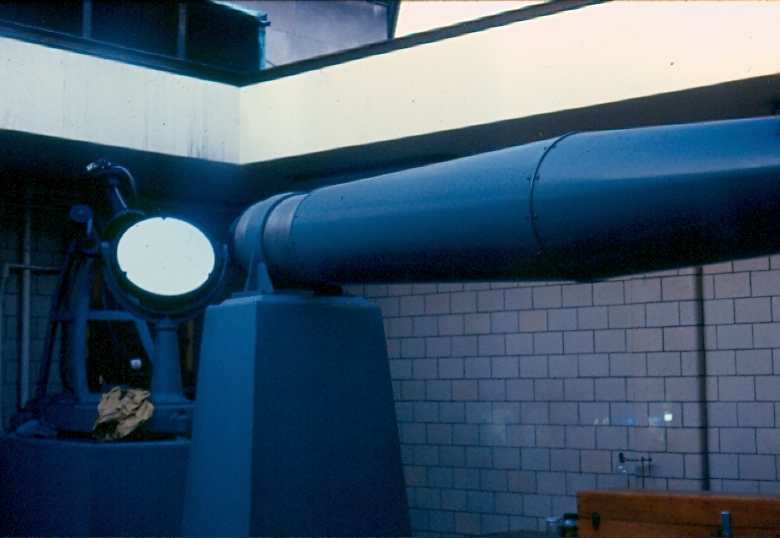
2016: 75th Year of Pittsburgh's Buhl Planetarium Observatory
Link >>> http://buhlplanetarium2.tripod.com
Want to receive SpaceWatchtower blog posts in your inbox ?
Send request to < spacewatchtower@planetarium.cc >..
gaw
Glenn A. Walsh, Project Director,
Friends of the Zeiss < http://buhlplanetarium.tripod.com/fotz/ >
Electronic Mail - < gawalsh@planetarium.cc >
SpaceWatchtower Blog: < http://spacewatchtower.blogspot.com/ >
Also see: South Hills Backyard Astronomers Blog: < http://shbastronomers.blogspot.com/ >
Barnestormin: Writing, Essays, Pgh. News, & More: < http://www.barnestormin.blogspot.com/ >
About the SpaceWatchtower Editor / Author: < http://buhlplanetarium2.tripod.com/weblog/spacewatchtower/gaw/ >
SPACE & SCIENCE NEWS, ASTRONOMICAL CALENDAR:
< http://buhlplanetarium.tripod.
Twitter: < https://twitter.com/spacewatchtower >
Facebook: < http://www.facebook.com/pages/
Author of History Web Sites on the Internet --
* Buhl Planetarium, Pittsburgh:
< http://www.planetarium.
* Adler Planetarium, Chicago:
< http://adlerplanetarium.
* Astronomer, Educator, Optician John A. Brashear:
< http://johnbrashear.tripod.com >
* Andrew Carnegie & Carnegie Libraries:
< http://www.andrewcarnegie.
* Civil War Museum of Andrew Carnegie Free Library:
< http://garespypost.tripod.com >
* Duquesne Incline cable-car railway, Pittsburgh:
< http://inclinedplane.tripod.
* Public Transit:
< http://andrewcarnegie2.tripod.

